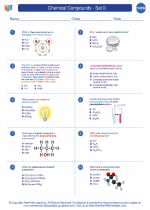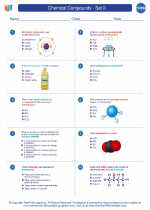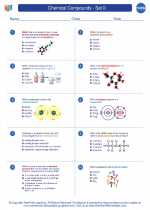Types of Composition in Chemistry
Composition in chemistry refers to the types and arrangement of elements that make up a substance. There are several types of composition that are important to understand in chemistry:
1. Chemical Composition
Chemical composition refers to the types and proportions of elements that make up a compound. It is represented by the chemical formula of the compound, which shows the elements present and the ratio of their atoms. For example, the chemical composition of water is represented by the formula H2O, indicating that each water molecule is made up of two hydrogen atoms and one oxygen atom.
2. Molecular Composition
Molecular composition refers to the types and arrangement of atoms within a molecule. It provides information about the structural formula of a compound, showing how the atoms are bonded together. For example, the molecular composition of ethanol is represented by the structural formula CH3CH2OH, indicating how the carbon, hydrogen, and oxygen atoms are bonded to each other.
3. Empirical Composition
Empirical composition refers to the simplest whole number ratio of elements in a compound. It is derived from experimental data and is used to determine the simplest formula of a compound. For example, the empirical composition of glucose is CH2O, indicating the simplest ratio of carbon, hydrogen, and oxygen atoms in glucose.
4. Percent Composition
Percent composition refers to the percentage by mass of each element in a compound. It is calculated by dividing the mass of each element in a compound by the molar mass of the compound and multiplying by 100. For example, the percent composition of carbon in glucose is approximately 40%, indicating that carbon makes up 40% of the mass of a glucose molecule.
Study Guide
When studying types of composition in chemistry, it is important to understand the following key concepts:
- The difference between chemical, molecular, empirical, and percent composition.
- How to write and interpret chemical formulas and structural formulas.
- How to calculate percent composition using experimental data and molar masses.
- The significance of composition in understanding the properties and behavior of substances.
Be sure to practice writing chemical formulas, calculating percent composition, and identifying molecular compositions to solidify your understanding of this topic.
.◂Chemistry Worksheets and Study Guides High School. Chemical Compounds - Set II

 Worksheet/Answer key
Worksheet/Answer key
 Worksheet/Answer key
Worksheet/Answer key
